Opinion: EV Shift Will Require Philosophical Blend

A little under two weeks ago, yours truly wrote about President Joe Biden’s plans for cutting tailpipe emissions and helping to encourage the shift to electric vehicles.
I laid out three basic philosophies that are at play in the debate as to how best move consumers en masse from internal-combustion-engine cars to EVs.
Here’s how I kicked off that piece: ” There are competing philosophies when it comes to shifting the market to electric vehicles. There’s the free-market philosophy, which says the market will get there on its own. There’s the incentive philosophy, which suggests incentivizing consumers will accelerate the transition away from the internal combustion engine. Consider that one to be the carrot approach. Finally, we have the philosophy that if regulations don’t force automakers to make more EVs, they won’t, at least not quickly enough to address climate change. The free market and/or incentives won’t be enough. Consider this to be the stick.”
I later said that I had thoughts on which philosophy would be best, and I’d hold my opinion for another time.
That other time has come, and my preferred philosophy on this matter is a blend of numbers two and three.
Now, before you flame me as some anti-capitalist radical, I am not necessarily opposed to free-market solutions. But I also find the free market to be limited, at least in some cases, when it comes to radical changes. It can also move slowly — and we simply don’t have time for slow change, given how serious of an issue climate change is. I also have noticed over the years that sometimes government intervention in the market actually creates opportunities.
Note: Climate change is real, and not a matter of opinion up for debate. We can debate how much of the problem is man-made (the consensus is that the actions of humans are the leading cause) but we can no longer debate if climate change is real or not. Furthermore, I am aware that while EVs don’t produce tailpipe emissions, there are legitimate environmental concerns about the sourcing of the necessary materials and the production of the vehicles. Therefore, I’m not arguing for or against a shift to EVs in this post — that’s beyond the purview of this piece — but rather, how best such a shift would be accomplished.
The logic of the free market philosophy works like this: Automakers are free to build what is most profitable for them and/or what consumers most desire. And if consumers want EVs, automakers will build them, but also if automakers build EVs and they are desirable, consumers will buy them.
The problem with that is automakers won’t pour tons of development costs into electric vehicles if there isn’t consumer demand for them. Or even if they’re uncertain about consumer demand — the high costs of building new models, especially with a relatively new powertrain technology, might keep risk-averse automakers from building EVs in the hopes they’ll sell.
It’s arguable that one reason that Tesla, once a small startup, was ahead of the rest of the industry on EV tech is that the company was more willing to be risky, given its startup nature.
And there are problems on the consumer side, too. Consumers are still concerned about range. Consumers want vehicles that meet their needs, and they find them best met by crossovers, SUVs, and trucks, and while EVs are being developed in that category, there aren’t enough yet.
There are concerns about charging infrastructure and charging times.
Consumers also think short-term sometimes. When gas prices dip, the incentive to shop EV lessens. Especially given the difficulties of charging.
If left to its own devices, the free market wouldn’t accelerate a shift to EVs. OEMs would continue to produce profitable crossovers and trucks with ICE powertrains, because that’s what buyers want (or think they want, in part because of OEM marketing), with little incentive to build EVs. As noted above, OEMs can be risk-averse.
Without intervention, the industry would just serve up gas and diesel-powered cars with a handful of EVs for those who really, really want them. To be fair, the ICE cars would still, generally speaking, be tuned to maximize MPGs and minimize emissions — buyers want to pass up gas pumps as much as possible — but there would be little emphasis on producing more EVs.
Unless, of course, the competition drove EV adoption. For all its faults, Tesla probably has pushed the legacy automakers towards EV adoption by making the tech sexy. Though I don’t think Tesla would’ve pushed the industry far enough on its own. If I thought that, I might be more supportive of the free-market philosophy toward EV adoption.
So that brings us to the carrot approach. Which we’ve seen in use for ages now. It usually involves government incentives in the form of a tax credit.
On its face, this approach seems workable. If early EVs are more expensive as automakers learn to scale and cut production costs on the technology, the incentives can help spur consumers by offsetting the higher MSRPs. And as EV costs come down, buyers might be enticed by the tax credit if it essentially means the sticker of an EV is less than a similar ICE vehicle, once the credit is factored in.
But this approach isn’t perfect. The tax credits are listed as “up to” a certain dollar amount, and depending on certain factors, the buyer might not get the full amount. It’s also a complicated question to determine whether your EV will cost less to operate over time compared to an ICE car that needs to be refueled, and the tax credits are just one part of that equation. Finally, tax credits don’t solve some of the issues of owning an EV, such as charger availability or charging times.
This is why some folks (including, in this author’s opinion, the current president) are pushing for what I call the “stick” approach. In this case, it’s an attempt to force automakers to build more EVs by pushing fuel-economy standards higher. Stricter fuel-economy standards would force automakers to build more EVs to offset the sales of ICE cars. This is because the average miles per gallon standard applies across the lineup to all models, so EVs can offset the MPGs of gas cars.
The negative here is obvious — few people in the auto industry want the government to dictate, even in an indirect way, what kinds of vehicles carmakers build. Especially if what the automakers are building doesn’t match what consumers want. Automakers don’t want to build slow-selling EVs to meet the standards, only to watch them linger on dealer lots.
Also, like the “carrot” approach, this approach doesn’t fix the issues regarding charging infrastructure. Though it could create opportunity — if the automakers are building more EVs, there will be a need for more (and faster) charging, even if the sales are slow overall.
Proponents of this approach will argue that if the automakers are forced to build EVs and offer them to consumers, people will buy them, and maybe even like them. And perhaps satisfied customers will share the EV gospel, thus causing more consumers to shop EVs, eventually causing EVs to grow as part of the market.
As for your humble author, I think an approach mixing philosophies two and three are more likely to bring change quickly, despite the negatives involved (it’s also questionable if incentives do spur EV buying, though at least one study seems to think so. Edmunds also seems to agree.).
Left to its own devices, without carrots or sticks, the automotive market probably would, eventually, be dominated by EVs. But we don’t have time for “eventually.” Not to mention that giving the market a shove in the direction of EVs will spur innovation in the industries needed to support them (aka charging).
Give makers a reason to build the cars, and buyers a reason to buy them, and we’ll move in the right direction much more quickly.
We need to.
[Image: Smile Fight/Shutterstock]

Tim Healey grew up around the auto-parts business and has always had a love for cars — his parents joke his first word was “‘Vette”. Despite this, he wanted to pursue a career in sports writing but he ended up falling semi-accidentally into the automotive-journalism industry, first at Consumer Guide Automotive and later at Web2Carz.com. He also worked as an industry analyst at Mintel Group and freelanced for About.com, CarFax, Vehix.com, High Gear Media, Torque News, FutureCar.com, Cars.com, among others, and of course Vertical Scope sites such as AutoGuide.com, Off-Road.com, and HybridCars.com. He’s an urbanite and as such, doesn’t need a daily driver, but if he had one, it would be compact, sporty, and have a manual transmission.
More by Tim Healey
Latest Car Reviews
Read moreLatest Product Reviews
Read moreRecent Comments
- 28-Cars-Later $12K? I needed a good laugh.
- EBFlex Wait...the feds are claiming that inflation was not FJBs fault 6 months prior to an election where he is massively losing in the polls in every single category?Eyebrow raised.
- MaintenanceCosts Most of the article after the blockquote is Posky laboring mightily to somehow blame this clearly anticompetitive and oligopolistic conduct on the big bad government.I look forward to some of the usual commenters explaining to us that, actually, the oil industry is a cuddly teddy bear and the real villain is people trying to sell us cars that don't use oil.
- Bd2 A modest price bump for one of the better if not the best vehicle in it's class. And it's a very good deal still considering the Front wheel drive competition over at Lexus to name one. These Genesis vehicles are more like BMWs of the 90s but with better styling.
- Dave M. What???? Big business taking advantage of us? I thought it was all Biden's fault!?!


















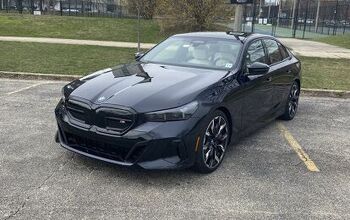
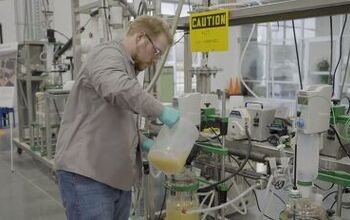


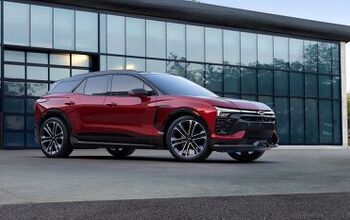
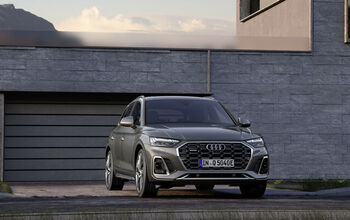

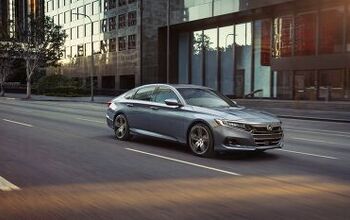

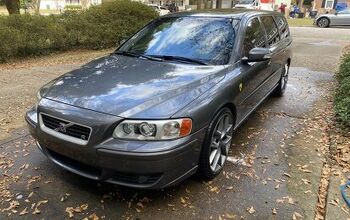
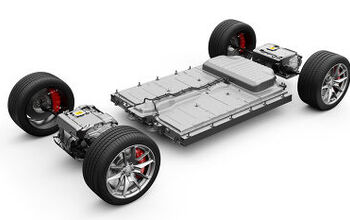


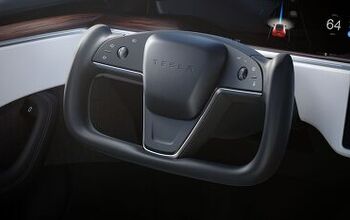
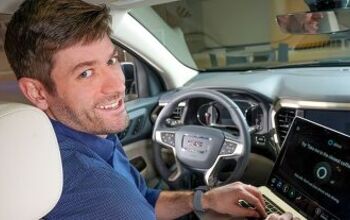
Comments
Join the conversation
Alright, end of all that and still...no numbers for where we need to be with respect to CO2 emissions per capita and no numbers for where a carbon tax needs to be set to achieve that. Still just some mythical number that will only really effect the wealthiest among us. Sell crazy someplace else. If those Scientists are correct (and per Mr. Healey, we aren't debating that), then the pain is coming. Or is this a "pass the tax to find out how high it is" sort of deal. You say a Carbon tax is the way. Fine. What is the number? And as has been pointed out, this will not be punitive to the people you think it will. They will play ball and behave because they can afford to. As for those of you rolling in that 2003 3800 powered Buick with more warning lights on the dash than the Apolo 13 Command Module, well hope a bus stop is nearby. The pain will hit everyone, you can pretend it won't, and this is something you can fix by influincing a few behaviors that are easily changed, but if those Scientists are correct you can't and the poorest among us will be lucky to have access to shelter and food and if you are out West all the money in the world may not buy you a glass of water. Time to pay the piper.
Wow, reading this misinformed dribble from the miseducated Healey makes one wonder what happens next. People who live in fear of “what ifs” based on politicized “science” should be roundly ignored. They base their lives on the injustices of the past (guilt) and future crises (fear). Sad really.